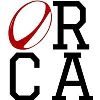Understanding the referee
Signals are used by the referee to indicate to the players and spectators why penalties have been awarded.
Learning these signals will help give you a better understanding of the game.
Advantage
To indicate that a team has advantage, the referee will stretch his arm out at waist height, pointing it towards the non-offending team. The indication lasts for around five seconds. It means that rather than stop play to give a penalty, the referee is allowing play to continue when the non-offending team are on attack.
Award of scrum feed
Feeding the scrum is the team gets to put the ball into the scrum. The referee points his arm towards the team that gets the scrum feed while standing facing the sideline, with his arm horizontal and at waist height.
Forward pass
The referee makes an emphasized hand gesture as if he has just made an imaginary pass that has gone well forward. He will give the scrum put in to the team that did not make the mistake.
Free-kick
The referee raises his arm, bent square at the elbow. The arm will be pointing towards the team that has been given the free kick.
Handling in a ruck or scrum
The referee bends forwards and lowers his arm towards the ground. He then moves his arm backwards and forwards as if he has handled an imaginary ball on the ground.
High tackle
The referee will hold is arm straight over his neck, under his chin. This shows to all the players that someone has made an illegal high tackle.
Killing the ball
The referee will point his arm downwards and move it up and down. This shows to all the players on the pitch that a player did not stay on their feet as they joined a ruck.
Knock on
The referee raises his arm above his head and moves his open hand backwards and forwards. Then, he will tap the palm of that hand with the other, to show to all the players that the ball has been knocked forward.
Obstruction
The referee crosses both his arms across his chest, like a pair of open scissors. This indicates to all the players that one player has stopped another illegally.
Penalty kick
The referee faces the sideline and with his arm straight and angled upwards, points towards the non-offending team. The non-offending team has the options of a penalty kick or a scrum.
Throw in not straight at a line out
The referee raises one hand above his head with his shoulders in line with the touch line. He will then move that arm backwards and forwards to show the ball was not thrown in straight by the hooker.
Try / penalty try
The referee stands on the try line and, facing the team that scored, raises his arm straight above his head while he blows his whistle. His back will be towards the dead ball line.
